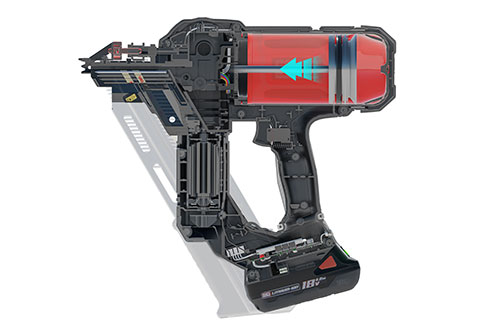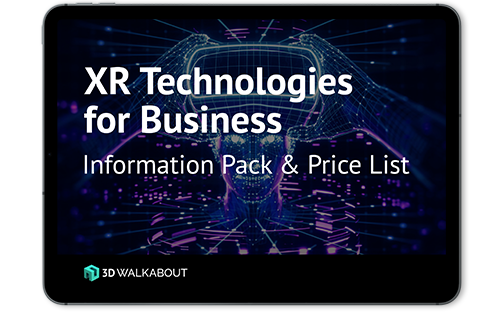3D rendering for product designers makes life a lot easier. Being able to experiment with new designs quickly and cost-effectively allows them to explore a wide range of possibilities without being limited by physical constraints.
In essence, 3D rendering makes it much easier to turn design concepts into detailed and realistic images faster and more accurately.
In the past, prototyping a new product meant building a physical version, which was time-consuming and expensive. But with 3D rendering, companies can create virtual prototypes of products, accurately simulating materials, textures, and lighting effects to achieve lifelike representations.
In this article, we’ll be looking at how 3D rendering can help launch your retail product sooner, so you can get them to your customers faster. Before we jump into how this can be done, let’s take a look at the different types of 3D rendering.
Types of 3D Rendering
There are several types of 3D rendering, each suited to different applications and requirements. The main three are:
Real-Time Rendering
Often used in video games and interactive applications, real-time rendering generates images quickly enough to allow for smooth interaction and navigation. This type of rendering is ideal for creating immersive customer experiences on e-Commerce platforms.
Pre-Rendered Images
These are high-quality images or animations produced ahead of time, not in real-time. Pre-rendered visuals are typically used in advertising, product catalogues, and promotional materials where the highest possible quality is required.
Hybrid Rendering
Combining elements of both real-time and pre-rendered techniques, hybrid rendering can offer a balance between interactivity and quality, making it useful for applications such as virtual product demonstrations and augmented reality experiences.
There are a number of great benefits to using 3D rendering to help get your retail products to the launching stage. From speed and super-realistic visualisation, to stronger marketing efforts and stakeholder collaborations. Let’s take a look at some of the biggest benefits in more detail.
Faster Design Creation
As we mentioned previously, traditionally, creating physical prototypes for each design iteration can end up being expensive and time-consuming.
However, with 3D product rendering, designers can not only design these products faster, but also make changes and adjustments to product designs without the need for physical models. By working with digital 3D models, designers can explore various design possibilities and experiment with different configurations quickly and efficiently. This means that if you have a particularly rogue or adventurous idea, you can run with it without worrying about any additional costs or time barriers.
Then there’s the added bonus of collaboration. As products are being created and going through their various design iterations, stakeholders can jump in and provide feedback at various stages at pretty much any time. This helps accelerate the design phase to get products on the shelf faster ensuring that products reach the market faster.
The Prototype Process is Made Easier
With 3D rendering, the need for physical prototypes is greatly reduced. Instead, designers are able to create virtual prototypes that accurately represent the final product. This allows for quick and efficient testing of different designs, materials, and configurations.
The efficiency of 3D rendering also translates to time savings. Designers can create and iterate virtual prototypes much faster than their physical counterparts. This not only speeds up the design process but also reduces costs associated with prototype production.
Additionally, 3D rendering provides flexibility in testing various environmental and lighting conditions. Designers can simulate different scenarios to better understand how the product will perform in real-world situations.
Faster and Safer Product Testing
Product testing, as you might have guessed, is an essential phase in the development cycle. Without it, you’d find it hard to guarantee that the final product meets quality and safety standards. 3D rendering significantly enhances this process in a few specific ways.
Firstly, 3D rendering allows for detailed simulation of various stress tests and usage scenarios. For example, designers can simulate how a product will react to different forces, temperatures, and environmental conditions. This helps identify potential weaknesses and areas for improvement without the need for multiple physical prototypes.
3D rendering also makes it easier to measure and analyse a product’s performance. Designers can run detailed checks and tests on aspects like structural integrity for display stands, aerodynamics for packaging, and ergonomics for handheld devices. These analyses provide valuable data that can be used to refine and perfect the product’s design before it goes into production.
Plus, rendering can also help see how products will interact with each other and with external elements. This is particularly useful in complex products with multiple moving parts, ensuring that all components work well together.
Getting the ‘Go-ahead’ With Stakeholders
Effective communication and collaboration are important when launching a product, but even more so when multiple teams and stakeholders are involved.
One major advantage of 3D rendering is its ability to provide a clear and detailed visual representation of the product. This makes it easier for designers, engineers, marketers, and other stakeholders to understand the design intent and provide meaningful feedback. Unlike 2D sketches or written descriptions, a 3D model can be rotated, zoomed in on, and examined from different angles, offering a comprehensive view of the product.
Real-time collaboration is another key benefit. Teams can work on the same model simultaneously, making adjustments and seeing the effects immediately. This is particularly useful for remote teams, as it ensures everyone is on the same page regardless of their physical location.
3D renders also play a big role when it comes to presentations, as they help better communicate design concepts to clients, investors, or other external stakeholders. High-quality visuals can convey the product’s features and benefits more effectively than traditional methods, leading to better-informed decisions and approvals.
Improved Marketing and Sales Strategies
3D rendering isn’t just a tool for designers and engineers; it can also ramp up your marketing and sales efforts leading up to launch. By creating high-quality, photorealistic images of a product, the more enticing it becomes and the easier it is to sell.
To start with, 3D renders can be used to create compelling visual content for advertising campaigns. High-resolution images and videos showcasing the product from various angles can be used in online and offline marketing materials. This allows potential customers to get a detailed look at the product before it’s even available on the market.
Tendering allows for better flexibility in your marketing campaigns. Whether you need images for social media posts, website banners, or printed advertisements, 3D renders can be easily adapted and customised to suit your needs. This ensures that your marketing materials are always fresh and on-point, keeping your audience engaged and interested.
Conclusion
Retail products and 3D rendering go hand-in-hand when it comes to revolutionising the way products are developed, marketed, and brought to market. As experts in this field, we can help you utilise 3D rendering to visualise your products with stunning realism and accuracy.
Whether it’s visualising future products, optimising manufacturing processes, or creating immersive marketing experiences, 3D rendering offers great opportunities for businesses looking to get their product to launch in the retail landscape.
Summary: Key Benefits of 3D Rendering for Retail Product Launches
Quickly iterate and adjust product designs without the need for physical models, saving time and costs.
Use virtual prototypes to efficiently test different designs, materials, and configurations, reducing the reliance on physical prototypes.
Conduct detailed simulations of stress tests and usage scenarios to identify weaknesses and improve product performance without multiple physical prototypes.
Utilise clear and detailed 3D visuals to facilitate better understanding, feedback, and real-time collaboration among teams and stakeholders.
Create high-quality, photorealistic images and videos for compelling advertising campaigns and flexible marketing materials, enhancing product appeal and engagement.
FAQs
Can 3D rendering be customised to match specific branding or design requirements?
Yes! it can be fully customised to align with your branding guidelines, design concepts, and specific requirements. From choosing the right color schemes and materials to incorporating branding elements, 3D rendering can accurately represent your commercial space according to your vision and style.
How does 3D rendering enhance marketing efforts for commercial properties?
They attract customers, investors, and tenants by showcasing architectural design, interior layout, and property ambiance.
What types of commercial projects can benefit from 3D rendering?
Virtually any commercial project can benefit from 3D rendering, including retail stores, shopping malls, hotels, restaurants, office buildings, exhibition centers, and entertainment venues. It helps showcase the design, layout, and aesthetics of the space.
How can 3D rendering benefit commercial projects?
It allows clients to visualise their spaces before construction, helps in marketing and promotional materials, aids in making design decisions, and assists in communicating ideas to stakeholders.
What is 3D rendering for commercial purposes?
Commercial rendering produces realistic visuals that market architectural designs and interiors of commercial properties, attracting customers, investors, and tenants.


